In-Depth Analysis of The Midnight Library by Matt Haig
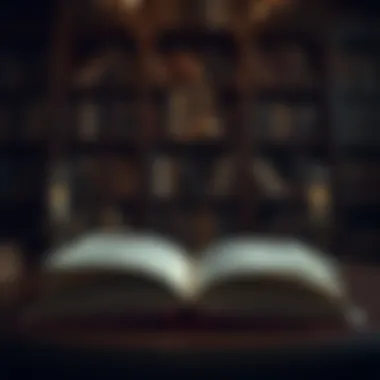
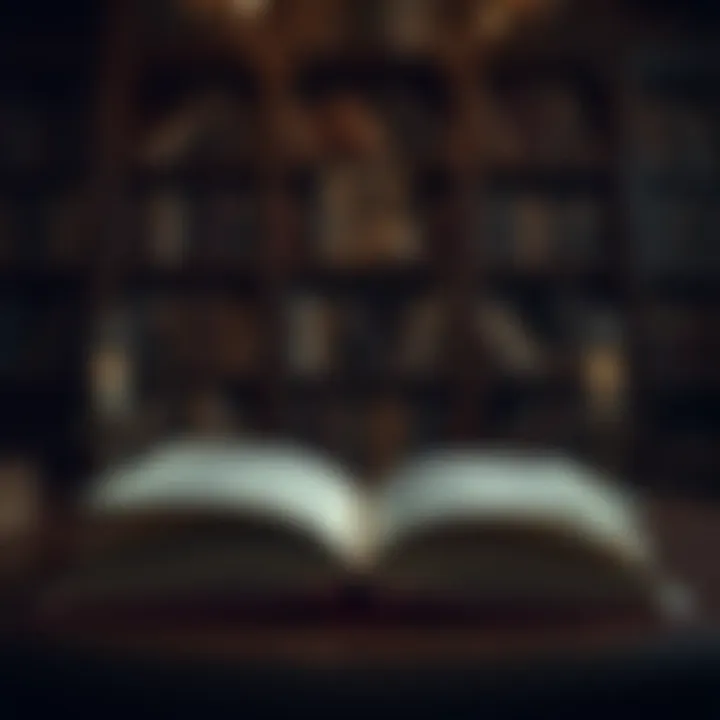
Intro
In the landscape of modern literature, few narratives manage to intertwine the intricate threads of choice, consequence, and the human psyche like The Midnight Library by Matt Haig. At the novel's core, it explores the existential labyrinth we navigate, laden with reflections on what could have been, underscoring the universal struggle of regret. The protagonist, Nora Seed, discovers a mystical library that houses books representing alternate lives — each one a reflection of different choices made or left undone. This exploration is not just a literary device but a profound commentary on human experience and the weight of our decisions.
This article will unravel the layers of The Midnight Library, offering insights into its philosophical undercurrents and character evolution. It is a place where every shelved book beckons with the stories of lives unlived, ultimately leading readers to ponder their own paths. Through a detailed examination of the themes of regret and possibility, we will highlight how Haig invites readers to assess their own choices and the lives they lead.
Key Lessons from the Book
Lesson Overview
The Midnight Library is replete with critical lessons that resonate deeply with our everyday lives:
- The Power of Choice: Each decision, no matter how trivial it may seem at the time, shapes the course of our existence. Haig underscores that it’s not merely about what we choose but how we perceive and accept those choices.
- The Nature of Regret: A poignant theme throughout the narrative is that regret can be a double-edged sword. It reveals our desires and fears, but if left unchecked, it can paralyze. Learning to embrace our mistakes often leads to growth.
- The Illusion of Perfection: Often, the lives we think we want, represented by the alternate versions of Nora, are not as idyllic as they appear. The book reminds us that imperfections are part of the human experience and often lead to the most meaningful moments.
Practical Applications
Understanding these lessons can aid in navigating life’s complexities:
- Embrace Your Choices: Acknowledging the decisions you make allows personal empowerment. Rather than yearning for what might have been, focus on your current path and the potential it holds.
- Reflect on Regrets: Use past regrets as a learning experience. Consider journaling about them or discussing them with someone closed to work through feelings and gain perspective.
- Acceptance of Imperfections: Allow yourself to be flawed. Realizing that perfection doesn't exist can liberate you, encouraging a mindset that values growth over unattainable ideals.
Author Insights
Author Background
Matt Haig, a British author known for his adept storytelling and exploration of complex themes, often channels his own experiences into his books. His struggles with mental health have shaped his understanding of anxiety, depression, and human resilience, making his work deeply relatable. With a unique blend of fiction and insightful philosophy, Haig crafts narratives that encourage conversations about mental well-being and the human condition.
Key Themes Explored
In The Midnight Library, Haig dives into several pivotal themes:
- Existentialism and Meaning: The story prompts readers to reflect on what makes life meaningful. The library symbolizes not just pathways but also choices that carry weight.
- Hope and Redemption: Amidst the darker shades of regret, there emerges a beacon of hope. The narrative demonstrates that it’s never too late to reframe your story and find purpose.
- The Role of Community: The relationships within the story highlight the importance of human connections. They serve as anchors, reminding us that we are not alone in our journey of navigation through choices.
"It is never too late to start again. Each choice is a new chance to shape the life you want to live." - Matt Haig
Through this exploration, the aim is not just to analyze a novel but also to ignite introspection among readers. As we delve deeper into The Midnight Library, we will appreciate how Haig’s prose masterfully intersects with themes of life, choices, and our intrinsic desire to find meaning, validating the complexities of the human experience.
Foreword to The Midnight Library
In a world where choices shape our realities, The Midnight Library stands as a compelling exploration of the delicate dance between dreams and regrets. This section sets the stage for a deeper understanding of Matt Haig's imaginative narrative, capturing the essence of what is to come. It focuses on significant themes, character explorations, and the profound philosophical inquiries raised throughout the novel. Each element delves into how individuals grapple with the weight of their choices, weaving a rich tapestry that resonates with the human experience.
Overview of the Plot
At the heart of The Midnight Library lies its intriguing premise: what if one could explore the myriad alternate lives that bifurcated from each choice made? The story follows Nora Seed, a woman at the crossroads of despair, who, upon her attempt to end her life, finds herself in a mystical library filled with books that represent the lives she could have led.
As Nora opens each book, she experiences a distinct life, from a professional swimmer to a glaciologist, and so on, vividly illustrating the ripple effects of choices. Each chapter peeks into the paths available to her, raising deeper questions about fulfillment, identity, and potential. It showcases the bittersweet nature of existence — how every decision leads not just to a new beginning, but also to an array of missed opportunities. The journey is not just about living alternate lives but understanding the very essence of regret and the complexity of human desire.
Author's Background
Matt Haig, the mind behind this thought-provoking tale, has a background steeped in writing and a notable passion for exploring psychological themes. Having faced his own battles with mental health, Haig draws from personal experience, imbuing The Midnight Library with authenticity and depth. Before venturing into fiction, he garnered attention as a non-fiction author, particularly for works like Reasons to Stay Alive, which addresses depression and anxiety. It is this blend of personal insight and imaginative storytelling that makes his work particularly relatable and profound.
His narrative style strikes a balance between engaging prose and intellectual depth, offering readers a unique lens through which they can reflect on their own lives and choices. Haig’s ability to tackle heavy subjects with grace has resonated widely, making his works not just stories but conversations about life itself.
"Every choice you make unfolds a new path, a new possibility, and understanding that interplay is essential to embracing life’s complexities.”
In summary, The Midnight Library serves as a mirror reflecting the myriad choices faced by individuals every day. It invites readers to ponder their own decisions and the paths that lie before them, creating a rich dialogue that extends beyond the pages of the book.
Characters in The Midnight Library
The characters in The Midnight Library offer a profound lens through which the reader can engage with the central themes of the novel. Each character serves as a unique thread in the intricate tapestry of narratives that Matt Haig weaves, ultimately enriching the exploration of choice, regret, and the pursuit of meaning. Through the lives of Nora Seed and her companions, the novel dives into the complexities of the human condition, allowing readers to reflect on their own choices and possibilities.
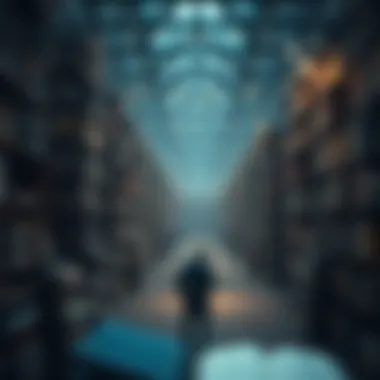

Nora Seed
Nora Seed is undoubtedly the heart of The Midnight Library. At first glance, she appears to be an ordinary woman, but her internal struggles are deeply resonant. The weight of her regrets burdens her existence; her feeling of being stuck is palpable. It’s this very sense of entrapment that drives her to the mystical library between life and death, where her past choices can be reevaluated. Nora embodies the idea that one’s life could have taken numerous paths, each filled with its own triumphs and sorrows.
"Regret can be a powerful force, shaping who we are and what we become."
As we follow Nora’s journey through various alternate lives, we witness her evolving understanding of what truly brings happiness. The reader is led to ponder, what does it mean to lead a fulfilling life? Through her character, readers can reflect on their own regrets and the potential for change.
Mrs. Elm
Mrs. Elm serves as the guiding force in Nora’s odyssey within the library. She represents wisdom and the nurturing aspect of choice. As a former school librarian, her presence brings a sense of comfort and familiarity. Mrs. Elm helps Nora navigate the myriad of choices available to her, often reminding her that life’s meaning is not merely a collection of achievements and milestones.
Unlike other characters, Mrs. Elm embodies acceptance and understanding. She encourages Nora to embrace the mistakes and uncertainties of her life, illustrating that every choice carries its own significance. In every conversation, her gentle guidance prompts Nora to consider what she truly values, making her one of the most pivotal characters in the narrative.
Supporting Characters
The supporting characters in The Midnight Library play crucial roles in shaping the protagonist’s perspective. They show the varied lives Nora might have lived, each bringing forth a spectrum of choices and outcomes:
- Dan: Nora’s brother who showcases the importance of familial bonds. In different lives, their relationship reflects the complexities of love and resentment.
- The Ex: Nora’s former partner represents the sadness of lost love, reminding readers of the pain of breakups and what might have been.
- The Rock Star: A portrayal of fame, this character underscores the pitfalls of achieving what’s often seen as success.
- The Physicist: This character elucidates the beauty of intellectual pursuits, reminding readers that happiness can be found in passion and curiosity.
Each of these characters emphasizes a different aspect of life’s choices, showing that happiness can look different for everyone. They enrich Nora’s journey and, in turn, offer diverse reflections for readers navigating their paths.
Themes in The Midnight Library
In Matt Haig's The Midnight Library, themes run deep, intertwining through the narrative like threads in a well-worn quilt. These themes invite readers to grapple with profound questions about life choices, regrets, and the essence of existence. Unpacking these topics not only enhances our understanding of the novel but also of ourselves. The concepts investigated here dovetail into personal growth, as well as offer insights crucial for those navigating their own paths in life.
The Nature of Regret
Regret is perhaps the central theme exploring the very essence of human experience in The Midnight Library. This feeling is universal, yet its manifestation is unique to each individual. At the heart of such emotions sits Nora Seed, the protagonist, who stands on the precipice of her own decisions. Each life she explores reveals different dimensions of what regret can look like, ranging from small annoyances to heart-wrenching regrets of lost opportunities.
Through her journey, readers are prompted to reflect on their own regrets. The narrative illustrates how these sentiments shape our actions and influence our perception of happiness. As Nora flicks through the pages of alternate lives, we see how regret can serve as a double-edged sword—forcing us to confront outdated choices while simultaneously providing a lens of acceptance. This exploration re-frames regret into something not merely lamentable, but potentially transformative.
"Regret is not a permanent state; it can lead us deeper into understanding and reframing our narratives."
The Concept of Choice
The concept of choice is intricately woven into the fabric of The Midnight Library. The protagonist's adventure highlights the weight of decisions, emphasizing that each choice branches into a myriad of possibilities. This idea challenges the notion of determinism, granting agency back to the reader and to Nora alike. In a world where choices abound, we come to understand that every decision, no matter how trivial it may seem, shapes our realities.
Nora’s experience echoes the real-life sentiment that a single choice can pivot one's entire existence. Whether it’s pursuing a career in music or opting for stability in a mundane office job, every flick of the page reveals the profound implications of those choices. The Midnight Library reminds us that life is not a straight line but a complex web of decisions that can lead to wildly divergent paths, highlighting the beauty of unpredictability.
- Life is not about the choices made but rather the understanding that every choice holds value.
- It is not merely the regret of what could have been but the richness of possibilities that life presents.
Existentialism and Meaning
The exploration of existentialism and meaning grounds The Midnight Library in rich philosophical soil. This theme beckons query into the overarching purpose of our existence. Haig structures the story around an existential crisis, where Nora confronts the very core of her being—who she is and what life she truly wants to lead.
Within the library, each book represents not just an alternative life but an inquiry into what constitutes a fulfilling life. The intersection of existential thought reveals a paradox; although each version of Nora’s life offers a potential solution to happiness, none provide an absolute answer. Readers are left to ponder their own beliefs about the meaning of life.
Exploring meaning through the lens of an alternate existence encourages introspection. Consequently, this theme resonates deeply, reminding us that the quest for meaning is perhaps more important than the answers we seek. It prompts readers to consider what truly constitutes a successful existence in an unpredictable world.
In The Midnight Library, Haig builds a rich tapestry using themes to foster dialogue around human experiences. By examining regret, the significance of choice, and the quest for meaning, readers not only delve into the life of Nora Seed but also embark on an introspective journey of their own, wrestling with the questions that linger long after the last page is turned.
The Philosophical Undertones
The philosophical dimensions woven throughout The Midnight Library enhance its narrative depth and illuminate critical questions about existence, choice, and the essence of happiness. These undertones serve as a lens through which readers can examine their own lives. They offer a multifaceted exploration, bridging literature and philosophy while challenging the reader to reflect on their own decisions and regrets. This connection is crucial not just for understanding the book but also for contemplating broader life lessons.
Influence of Stoicism
Stoicism, an ancient Greek philosophy which emphasizes the importance of virtue and reason, has notable implications in Haig's narrative. The philosophy encourages individuals to control their responses to life's circumstances instead of causing themselves distress over external factors. In The Midnight Library, Nora Seed’s exploration through countless alternative lives reflects a deep engagement with Stoic principles.
Nora grapples with her own decision-making and the weight of regret, ultimately learning that her feelings about these decisions lie within her grasp. The idea that “it is not what happens to you, but how you react to it that matters” resonates profoundly as Nora acknowledges that her life choices, flawed as they might be, don’t define her value as a person. Stoicism thus provides a platform for Nora's character growth, suggesting that acceptance and inner focus can lead to a more content life.
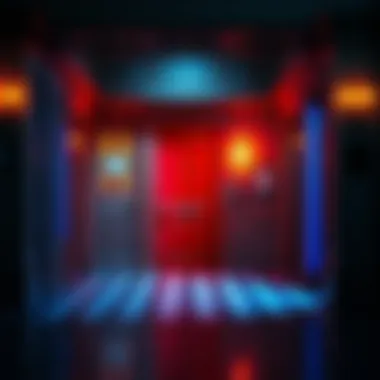
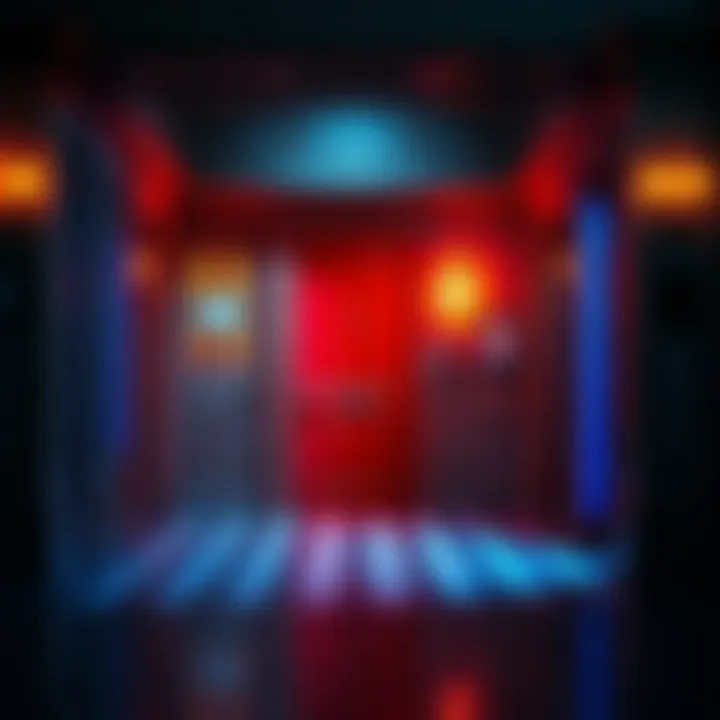
In essence, the narrative reinforces that establishing a sense of control over our emotions and reactions is fundamental in navigating life’s trials. The lessons derived here could be transformative not only for Nora but also for readers confronting their own lives.
Buddhism and Acceptance
Buddhism, with its cornerstone concepts of acceptance and mindfulness, beautifully complements the themes explored in The Midnight Library. At its core, Buddhism teaches the importance of living in the present moment and accepting life as it unfolds—values that resonate through Nora's journey. As Nora navigates the myriad choices available to her, the essence of mindfulness emerges as a significant theme in understanding her experiences.
Through her travels in the library, Nora ultimately confronts the reality that life is filled with imperfections. This realization aligns closely with Buddhist thought that advocates for embracing life, with all its complexities, rather than remaining trapped in regrets about past choices or anxiety about future possibilities. For Nora, the practice of acceptance becomes a catalyst for personal growth and enlightenment.
Moreover, the narrative poses an integral question about the nature of happiness. It suggests that true contentment springs not from constantly seeking alternatives or avoiding discomfort but from understanding and accepting one’s present circumstances. The exploration of these ideas can urge readers to reflect on their own lives, inspiring them to foster a mindset rich in acceptance and mindfulness to enhance their daily experiences.
"To have a life that is truly fulfilling, one must acknowledge both the light and shadows within one's journey."
Narrative Structure
The narrative structure in 'The Midnight Library' serves as a critical framework that shapes the way the story unfolds and affects the reader's understanding of the themes woven throughout the text. This structure allows Matt Haig to explore complex ideas like choice and regret while enabling readers to engage with Nora Seed’s journey on various emotional levels. The unique narrative format enhances the reading experience, providing a rich tapestry of interconnected stories that reflect the myriad possibilities of life.
A significant aspect of this narrative is its adaptability. Haig employs a nonlinear approach, weaving between various alternate lives that Nora could have led. This shifts the focus away from a traditional plot progression and introduces an almost kaleidoscopic view of existence, urging readers to consider how their decisions shape their realities.
Moreover, the use of multiple perspectives allows for exploration not just of Nora's regrets, but also of the lives of those she could have influenced. This multi-layered storytelling gives a voice to other characters, inviting readers to ponder the effect of one’s choices on the broader circle of lives. The narrative structure accommodates both an exploration of self and a critique of societal norms, showcasing how individual decisions ripple through the lives of others.
Use of Magical Realism
In 'The Midnight Library', magical realism places the ordinary world alongside the fantastical. The library itself, a space between life and death, symbolizes a portal to infinite possibilities. By incorporating elements of magical realism, Haig breaks the barriers of logic and invites readers to suspend their disbelief. This makes the introspective journey accessible and allows readers to engage with complex existential questions without the weight of realism holding them down. It’s a fresh, enlightening lens through which we observe Nora's choices, illuminating the potential beauty and sorrow each road taken—or not taken—can bring.
The library is populated with books that represent alternate paths, each one a life not lived. This concept aligns well with the idea of parallel universes, commonly found in magical realism, and it presses upon readers how every decision comes with its own set of consequences and rewards. The charm in Haig's approach lies in this blend of real emotions with extraordinary circumstances.
The Role of Metafiction
Metafiction plays a vital role in enriching the narrative of 'The Midnight Library'. The novel often reflects on itself, accommodating a self-awareness that engages readers in a dialogue about storytelling itself. For example, Nora's exploration of her alternate lives evokes questions about the construction of her story. Such engagement compels readers to think critically, not just about the choices of the protagonist, but also about the very nature of fiction and how stories shape our understanding of realities.
This metafictional element highlights the interconnectedness of the narrative with the reader's own life, prompting introspection about personal experiences and choices. It acts as a mirror, reflecting back on the reader’s journey while Nora is navigating her multiple lives. By recognizing the artifice of storytelling, Haig encourages a deeper comprehension of the layers that underpin human experiences, transforming a simple story into a profound exploration of existence itself.
"In 'The Midnight Library,' each choice is a thread in the tapestry of life, where the fabric is woven not just by what we do, but by what we might have become."
In summary, the narrative structure—characterized by magical realism and the powerful use of metafiction—enhances the depth of Matt Haig's novel, inviting readers to reflect on their own choices and the paths they've taken. As the narrative unfolds, it not only entertains but also provides a thoughtful commentary on life, regret, and the very essence of what it means to be human.
Comparative Literature
In delving into Matt Haig's The Midnight Library, the lens of comparative literature offers a treasure chest of insights. This approach does not merely stitch together disparate texts but highlights the intricate relationships and thematic dialogues between works. Through comparative literature, readers can see how The Midnight Library stands alongside its contemporaries, revealing not just its uniqueness but its resonance with broader literary currents.
When examining The Midnight Library, it's crucial to consider the thematic overlaps it shares with other narratives. While the story elegantly dances around concepts of regret and choice, other literary pieces also wade into similar waters. The benefits of comparative literature lie in its capacity to illuminate these shared themes, allowing for a deeper understanding of how different authors tackle the same existential dilemmas.
Moreover, comparative literature broadens the horizon of analysis. By juxtaposing Haig's work with various texts, readers can appreciate diverse narrative techniques and character arcs, enriching their interpretation of the novel. This discipline encourages a multifaceted examination of literature, where cultural context, historical background, and philosophical stances intersect beautifully.
Similar Works in Fiction
Several fictional works echo The Midnight Library's exploration of alternative realities and the choices that shape our lives. Here are a few noteworthy examples:
- The Sound of Things Falling by Juan Gabriel Vásquez — This novel reflects on the intersections of personal lives and societal changes, exploring themes that resonate with Haig’s narrative.
- Where the Crawdads Sing by Delia Owens — Kya’s solitary existence and her choices weave a story rich in environmental psychology, much like Nora’s journey through alternative lives.
- Life After Life by Kate Atkinson — This work explores the concept of multiple lives through various decisions, presenting a profound meditation on the impacts of those choices.
These texts, akin to The Midnight Library, invite readers to contemplate their own paths and the ripple effects brought about by decisions.
Philosophical Novels
The realm of philosophical literature often intersects with the themes portrayed in The Midnight Library. This genre cultivates an in-depth examination of the human condition, framed around central concepts of existence, choice, and meaning. Works that fall under this category include:
- Sophie's World by Jostein Gaarder — Blending fiction and philosophy, this novel walks readers through the history of philosophical thought in a narrative framework that challenges perceptions of reality and existence.
- The Unbearable Lightness of Being by Milan Kundera — Kundera's discourse on lightness and weight connects profoundly with Nora's journey, exploring love and choice in a way that forces reflection on one's life's significance.
- The Stranger by Albert Camus — This story probes existential themes, pushing the boundaries of the human experience, mirroring Nora's introspection across her myriad possible lives.
In summary, the comparative literature perspective sheds light on the importance of choice and regret as universal themes prevalent in various narratives. This understanding not only enriches readers' interpretations of The Midnight Library but also aids in recognizing the broader literary movements and philosophical inquiries that resonate within our lives. The texts mentioned resonate well and offer fertile ground for thought, demanding engagement in existential reflections that perhaps mirror our everyday choices.
"Reading is to the mind what exercise is to the body."
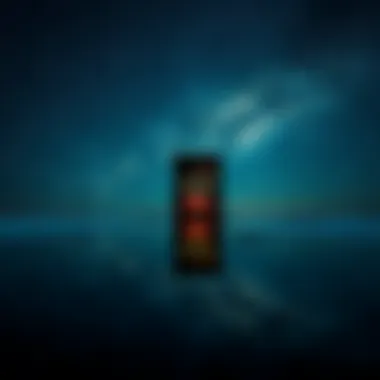
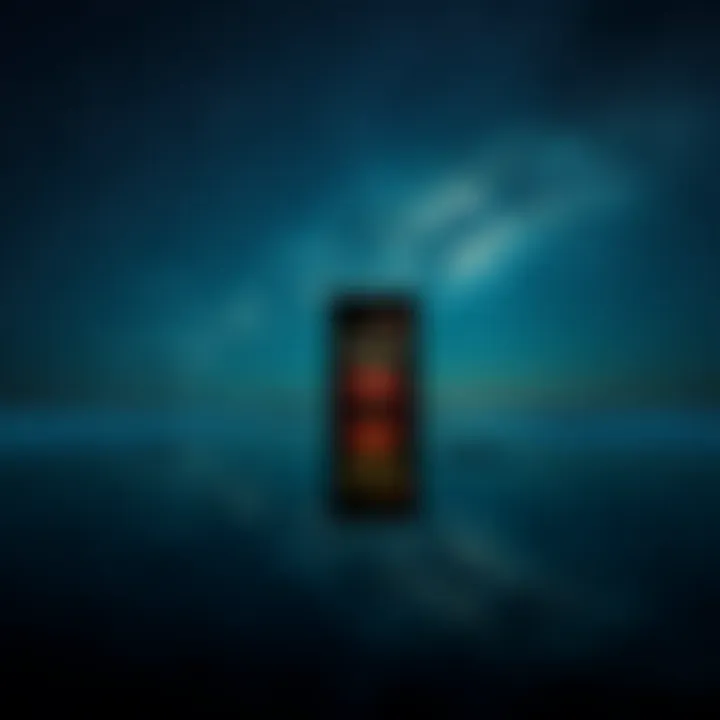
These reflections foster growth, and wisdom gleaned from diverse literary sources. Engaging with these works in conjunction with Haig's novel offers a profound depth to one's comprehension of life's intricate weave.
Critical Reception
Understanding the critical reception of The Midnight Library is essential for grasping its significance in contemporary literature. This aspect includes various dimensions such as reviews from literary critics, readers' responses, and how the work has influenced societal discussions on broader themes like mental health, identity, and existential choice. The feedback received reflects not only the narrative’s impact but also the cultural climate in which it was published, offering insight into how literature can resonate with a wider audience.
Reviews and Commentary
The novel has garnered a tapestry of reviews across the literary spectrum. Many critics have praised Matt Haig for his storytelling prowess and his ability to tackle complex philosophical themes in an accessible manner. For instance, reviewers from well-known publications, including The Guardian and The New York Times, have highlighted how the narrative intertwines emotional depth with intellectual stimulation. Here’s a snapshot of the common themes found in reviews:
- Emotional Resonance: Critics often point out the relatability of the characters, particularly Nora Seed's journey through her regrets and choices, making the story a mirror for many.
- Philosophical Engagement: Multiple commentators have noted the way the book invites readers to reflect on their own lives. One review stated, > "Haig expertly crafts a narrative that makes you question 'what if' with every turn of the page."
- Narrative Style: Haig’s unique blend of magical realism and straightforward prose has been commended. This style helps to demystify heavy themes, allowing a broader audience to engage with philosophical questions.
Additionally, reader comments are equally telling, revealing that many have found solace in the book during challenging times, especially in the context of mental health discussions. Readers on platforms like Goodreads and Reddit often express how The Midnight Library helped them navigate their perspectives on life choices.
Cultural Impact
The cultural impact of The Midnight Library extends beyond the realm of literature into the fabric of social conversations surrounding personal fulfillment and mental health awareness. This novel catapulted discussions on topics like:
- Mental Health: With the growing global dialogue around mental health, The Midnight Library serves as a poignant reminder that it’s okay to seek help and to acknowledge one’s feelings. The narrative emphasizes self-acceptance and the importance of addressing emotional struggles.
- Filtering Life Choices: The concept of a library filled with alternate lives sparks conversations about choice and consequence, resonating with many who grapple with decision-making in their lives
- Educational Discussions: Educators have found value in using this novel as a teaching tool. It opens discussions about literature’s role in understanding human experiences and the importance of choice.
Key Messages and Lessons
In examining The Midnight Library, it becomes clear that the novel serves as a reflective mirror, inviting readers to engage deeply with the concepts of choice and regret. The core messages interwoven throughout the narrative not only resonate within the framework of literature but also extend to personal and social contexts. The lessons imparted encourage a critical evaluation of one’s decisions and their implications for future potential.
One of the primary messages is about the weight of choices. Every decision, whether monumental or trivial, shapes the path of our lives. This notion is beautifully encapsulated by the protagonist, Nora Seed, whose exploration of alternate realities highlights how varied outcomes stem from different choices.
Applying the Lessons in Real Life
Applying the lessons from The Midnight Library to daily life can be a transformative experience. Understanding that choices define us empowers individuals to take control of their narratives. Here are some key takeaways to consider:
- Reflect on Your Choices: Regular introspection can aid in recognizing which choices align with your values and aspirations. This does not mean dwelling on regrets but instead understanding where you want to go.
- Embrace the Possibilities: The novel teaches the significance of viewing choice as a spectrum of possibilities. Real life can feel confining, but observing scenarios where different paths could have been chosen encourages flexibility in thinking.
- Foster a Growth Mindset: Mistakes and regrets can be powerful teachers. Rather than allowing regret to paralyze you, let it fuel a desire for growth.
Nora’s journey shows that life’s winding paths are not merely about the decisions themselves but about the learning and evolving that ensue.
Personal Growth Through Literature
Literature, particularly works like The Midnight Library, offers a unique avenue for personal growth. Books provide a safe space to explore complex themes and confront uncomfortable truths. The beauty of reading is that it stretches understanding and fosters empathy towards different perspectives. Here’s how The Midnight Library enhances personal growth:
- Encourages Empathy: By walking in Nora’s shoes and experiencing different lives, readers gain insight into diverse struggles and triumphs, enhancing their capacity for compassion in real-life interactions.
- Promotes Self-Discovery: The journey through alternate realities mirrors our quests for identity. Readers can identify parts of themselves within Nora and her choices, prompting significant self-reflection.
- Ignites Itnspiration: The message that change is always possible acts as a powerful motivator. Realizing that one can rewrite their narrative leads to action, whether it’s switching careers, investing in relationships, or pursuing forgotten passions.
"It is never too late to be who you might have been."
This quote resonates deeply with the essence of the novel. Literature enables us to explore this infinite potential without fear of judgment, opening doors to personal transformation.
Ultimately, The Midnight Library is more than a narrative; it’s a compelling guide to recognizing the complexity of choice and the potential for personal evolution through understanding. By embracing these lessons, readers may step away with not just a deeper appreciation for the story but also for the intricate tapestry of their own lives.
Epilogue
Reflecting on the myriad themes and concepts woven throughout The Midnight Library, it's clear that the novel serves as more than just a narrative; it is a profound exploration of the psychological intricacies of regret, choice, and human potential. This conclusion seeks to encapsulate the essentials of the discussion, allowing readers to derive insightful recommendations and resonating takeaways.
Final Thoughts on the Novel
In the grand tapestry of modern literature, The Midnight Library stands out as a remarkable narrative that resonates with the struggles of the contemporary individual. The protagonist, Nora Seed, embodying an everyman archetype, grapples with the existential questions of whether the lives we choose are genuinely fulfilling.
Each visit to the midnight library reveals not only whimsical alternatives but also the weightiness of our choices. This layered narrative provides a platform for readers to question their paths and potential, inviting us to reflect on our own choices with compassion and understanding.
One striking aspect of Haig's technique is his ability to balance darkness with light. The library, a repository of both dreams and unfulfillment, speaks to the human condition — the constant balancing act between regret and the pursuit of happiness. As we ponder Nora's journey, we find ourselves compelled to evaluate our own lives with empathy, encouraging a path toward personal growth.
The Future of Literature Inspired by The Midnight Library
The literary impact of The Midnight Library is characterized not merely by its thematic richness, but also by its potential influence on emerging writers and thinkers. As we move further into an age where literature is not only a reflection but also a catalyst for introspection, the exploration of complex emotional landscapes becomes increasingly vital.
The themes present in Haig's work are likely to inspire a new wave of storytelling. Authors may follow suit, delving into the intricacies of human emotional experience, using fantastical elements as a means to prompt real-life reflection. Works that dissect the essence of choice and the repercussions that follow will resonate deeply, echoing Haig’s sentiments.
In short, the narrative's examination of life’s possibilities holds the promise of inspiring future literature that examines what it means to exist within the fluid boundaries of choice and consequence, reinforcing the significance of personal narrative amid a sea of external influences.
"In the end, it’s not just about the choices we make, but the lives we examine that shape our understanding of who we are."
The wealth of lessons embedded within The Midnight Library offers a map to the understanding of one’s own life journey. As such, it lays the groundwork for both readers and writers to explore the depths of existence, reimagining the myriad lives we could lead.



